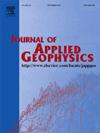A nonnegative constrained method for high-precision downward continuation of gravity field data
IF 2.2
3区 地球科学
Q2 GEOSCIENCES, MULTIDISCIPLINARY
引用次数: 0
Abstract
Gravity downward continuation is an effective method for processing and interpreting gravity data. Finding a gravity downward continuation method with high accuracy and stability is a persistent and popular research topic. At present, there are two common strategies for reducing the ill-posedness inherent in the downward continuation of potential fields, namely, regularization, and the design of wavenumber domain filtering operators. However, these downward continuation strategies often result in unsatisfactory continuation accuracy due to excessive smoothing of the downward continued field. To improve the stability and accuracy of the gravity downward continuation calculation, we construct an equivalent mathematical model of gravity downward continuation. This model is not only equivalent to the traditional gravity downward continuation model but also introduces nonnegative constraints into gravity downward continuation. This approach effectively reduces the ill-posedness of gravity downward continuation. Based on the newly proposed gravity downward continuation model, we propose a constrained gravity downward continuation method. Comparison experiments based on a synthetic gravity model and real gravity anomaly data show that, compared with the other four high performance unconstrained potential field downward continuation methods, the constrained downward continuation method proposed in this paper produces a more stable and accurate downward continued gravity field when the observed data are corrupted by noise.
重力场资料高精度向下延拓的非负约束方法
重力向下延拓是处理和解释重力资料的有效方法。寻找一种高精度、稳定的重力向下延拓方法一直是一个热门的研究课题。目前,减少势场向下延拓所固有的不适定性有两种常用策略,即正则化和波数域滤波算子的设计。然而,这些向下延拓策略往往导致不满意的延拓精度,由于过度平滑的向下延拓领域。为了提高重力向下延拓计算的稳定性和精度,建立了重力向下延拓的等效数学模型。该模型不仅等效于传统的重力向下延拓模型,而且在重力向下延拓中引入了非负约束。这种方法有效地减少了重力向下延续的不适。基于新提出的重力向下延拓模型,提出了一种有约束的重力向下延拓方法。基于综合重力模型和实际重力异常数据的对比实验表明,与其他四种高性能无约束势场向下延拓方法相比,本文提出的约束向下延拓方法在观测数据受噪声破坏时,能得到更稳定、更精确的向下延拓重力场。
本文章由计算机程序翻译,如有差异,请以英文原文为准。
求助全文
约1分钟内获得全文
求助全文
来源期刊

Journal of Applied Geophysics
地学-地球科学综合
CiteScore
3.60
自引率
10.00%
发文量
274
审稿时长
4 months
期刊介绍:
The Journal of Applied Geophysics with its key objective of responding to pertinent and timely needs, places particular emphasis on methodological developments and innovative applications of geophysical techniques for addressing environmental, engineering, and hydrological problems. Related topical research in exploration geophysics and in soil and rock physics is also covered by the Journal of Applied Geophysics.
 求助内容:
求助内容: 应助结果提醒方式:
应助结果提醒方式:


